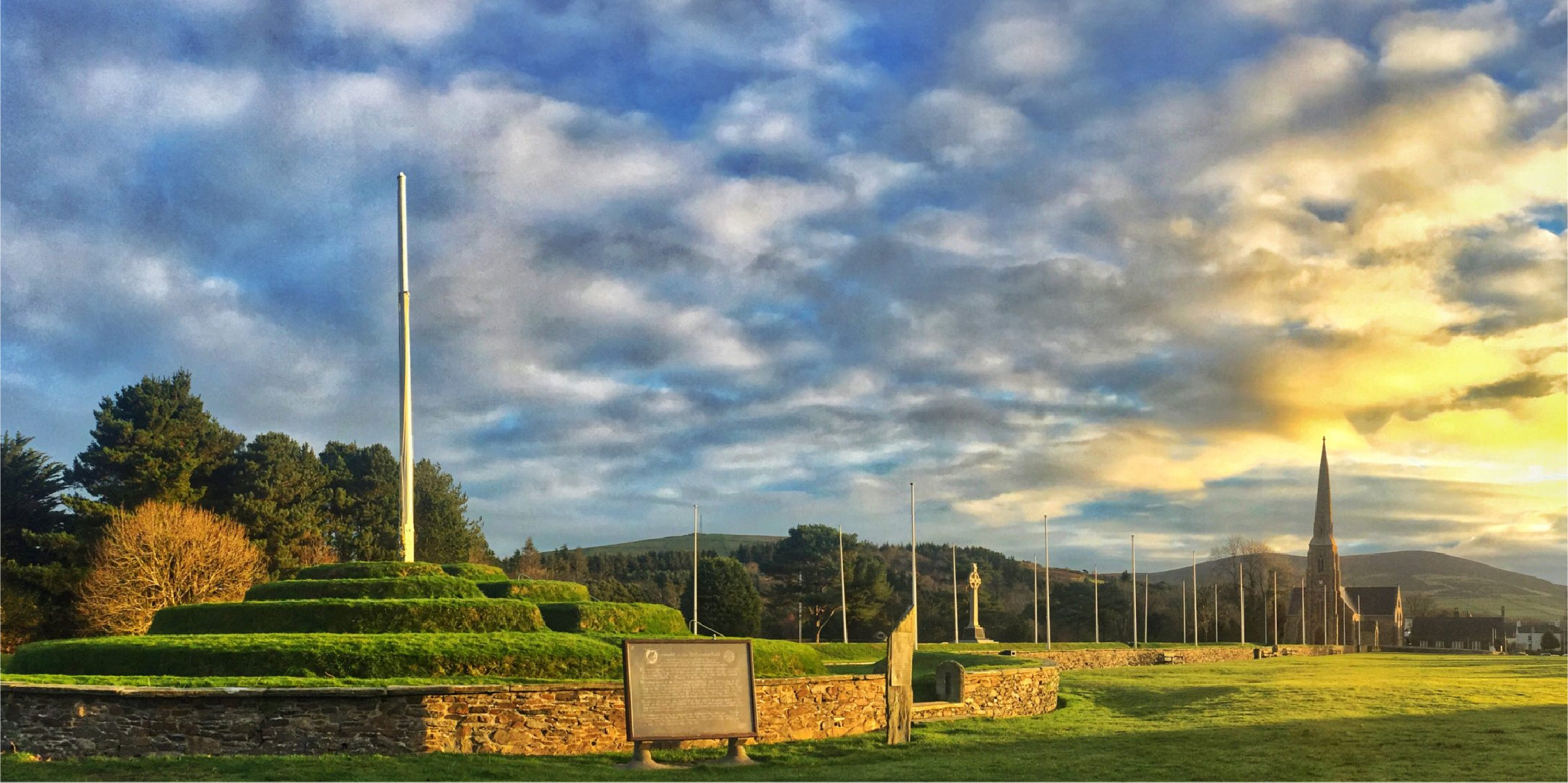Tynwald is the greatest monument that the Norsemen have left us. The ceremony which is seen at Cronk y Keeill Eoin, ‘the Mound of the Church of St John,’ is an event of no common interest from whatever point we contemplate it. Long over a thousand years have passed since ‘the Worthiest of the Land‘ first met at the Tynwald to consider with the King and his Law-men the affairs of the nation, while the great body of people stood around and signified their assent or dissent by voice and clash of arms. Over a thousand years ago the Toshee, or chiefs, were the source of all political authority and power. They elected their kings and deposed them at pleasure. They obeyed them implicitly in war, because they were their own choice and because they trusted them; and in times of peace they rendered them the respect due to their actions and characters. But they carried themselves as free men with a high spirit and their obedience was neither abject nor servile.
The first parliament of England was called by Simon de Montfort in 1265 but whatever legislative assemblies or Althings may have been set up by the Vikings in England in the 9th century, they were content to surrender them to the English within two or three generations. On the other hand the Royal line of Man retained its often precarious sway over the archipelago of the Isles for three centuries and outlasted the great families of all the other Viking states in the west.
Tynwald must have had something to do with this continuity: its political astuteness, besides the prowess of the kings and princes and chieftains, is implied by its achievement. It is worthy of note that in the height of the Middle Ages the Manx Kings still bore something of the proud spirit and ability of the great leaders of early Viking times. Out national assembly was called the Thing, a word which forms the first part of the term Tynwald. The second half is Norse for ‘field’ or ‘meeting place’; so that Tynwald (Thingwald) was originally the place where the assembly of free men met.
Before the present church of St John was built in 1849, when the walls of the old chapel were taken down a year earlier, there was discovered in the south wall, a broken shaft of a Runic cross slab of a date about 950 CE. It had carved on it the well-known ring-chain pattern associated with the Norse period. This implies that there had been an even earlier chapel on the site used in connection with the ceremony on the Hill. Hill and Temple appeared to be, as it were, twins. Discussions and enactments of laws took place in the Temple, but the proclamations and inaugurations took place on the Hill in the presence of the people.
Our Tynwald is said to be composed of earth taken from the 17 parishes but it is almost certain to have been erected upon a Bronze Age site. The Hill is circular in form and consists of four terraces, the lowest of which is eight feet broad, the next six feet, the third four feet and the topmost six feet, each terrace being three feet high. To the west of the mound is an ancient track called Follagh y Vannin to the north. When widening this track there was exposed a burial cist of late Bronze Age.
At a Court of the Tynwald, after the religious rites had been completed, the king, chiefs and chosen man held Court in the Hall, seated on benches ranged along the walls, the high-seat of the king conspicuous with its carved posts. Having discussed the business before them, and come to decisions, they moved in procession to the sacred Hill. There the chief Lawman, or Deemster, recited the ancient law, and announced proposed enactments to the whole assembly for their approval.
The king or lord sat in royal state on the top of the Hill, facing the east, his sword held point upwards before him. His barons (of whom the Bishop alone survives) were beside him. Before him sat the Deemsters and High Officers. On the platforms below were the Four and Twenty, the clergy, and lastly, the esquires and yeomen, represented since the 16th century by the parish captains. Outside the fenced enclosure were gathered the commoners of Man. Near the Lord stood three ‘Clarks’ in white surplices bearing the Three Relics of Man. What these venerated objects were no-one knows, but it is likely that two of them were the Staffs of St Patrick and St Maughold, the only trace of which is now to be found in the two estates called ‘Staff-land’ in the parishes of Patrick and Maughold.
Comparison with the Icelandic Althing
Our Tynwald and the Icelandic Althing correspond in very many points. Our Tynwald is equal to the Icelandic Log-borg, ‘the law hill.’ The House of Keys answers to the Icelandic Log-retta, ‘the Court.’ Our chapel corresponds to the Temple of heathen days, the Midsummer Day procession answers to the Icelandic Log-bergis-ganga, ‘the procession to the law-hill.’ The Deemsters answer to the Icelandic Lag-man, ‘law-man.’
(source: text by William Cubbon from his final book, Island Heritage (1952); photograph by Ber Weyde. Link to photographs of Tynwald Hill courtesy of the imuseum)
